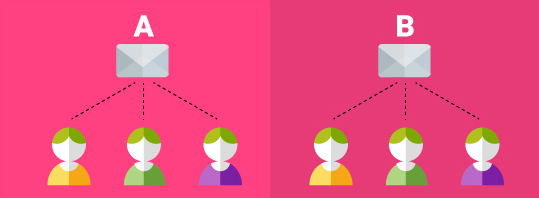Managing contacts and filters for lists segmentation in email marketing
Published in march, 15 of 2016 
According to statistics, 9 out of 10 companies use email marketing campaigns to reach customers. To engage them, 85% of corporations are betting on contact segmentation, which is considered the most effective technique. We have prepared some tips so that you can do well in managing and segmenting your lists. Check it out!
Mailing: how to create your contact list

Having a contact base helps in the dissemination of new products and provides value to what your company does. In addition, lists organize the information about your contacts, bring the consumer closer to your brand and boost the ROI (return on investment). But how to get it?
You need to create a list. To do this, you should collect all the contacts you have, from your computer or from email accounts. To attract new contacts, make available on your website a form for visitors to enroll and become part of your mailing. This record will serve as authorization for your company to send emails according to email marketing best practices.
Many companies have a list of emails ready to sell. Betting on this format of getting contacts is illegal and can lead to loss of deliverability and IP credibility. More than that, these email adresses may not reach your target audience, after all, the list was not created from a specific audience. Choose to send emails to people who are related or interested on your brand, service or product in some way, like customers, friends and partners. Email marketing should be customized.
To complete, be sure to include to your base only contacts who authorized and are aware of your emails.
An email marketing campaign for each segment

A rule can be applied to all campaigns that are seeking results: segment your contact list! By creating filters to integrate contacts with common characteristics, the chances of positive impact and conversions increase, since your company will submit an offer based on real needs. Promote this segmentation through three main areas: demographic profile, behavior or performance.
-
Demographic Profile: the first is the most common and is based on items such as age, gender and location from contacts. Collect this information through registration forms and take advantage of all forms of interaction to boost your contact base.
-
Behavior: the second is evaluated through the interaction of customers with the brand and what they look for on your website. Monitor the way consumers communicate, identify the degree of interest in certain products or services of your company and create specific campaigns for these needs.
-
Performance: the last form includes a segmentation targeting the metrics of your email marketing campaigns. By using the results as sources of information, it is possible to identify the contacts with greater propensity to purchase. Conduct an A/B test to draw a comparison between your campaigns and define the most effective in generating results.
Trigger Marketing: gain the customer at the right time

Finally, in order to segment your contacts and create an even greater impact on your campaigns, also bet on Trigger Marketing. It is a set of actions based on your target audience predisposition to purchase: in other words, the approach happens right after the customer searched for a particular product or service on your site The conversion chances are immense!
Note the individuality of your target audience and customize your emails. Maintain an active relationship and strengthen the consumer relationship with your brand. Evaluate each campaign, seeking constant maintenance, and watch who opened the email, who clicked and who was attracted by the “call to action”.
Like it? Share it!
Facebook, Twitter, LinkedIn, Google+